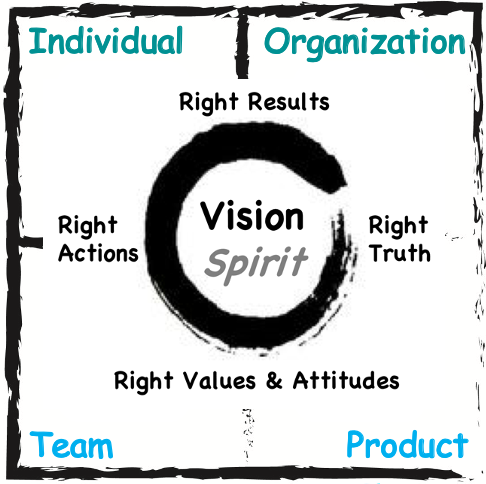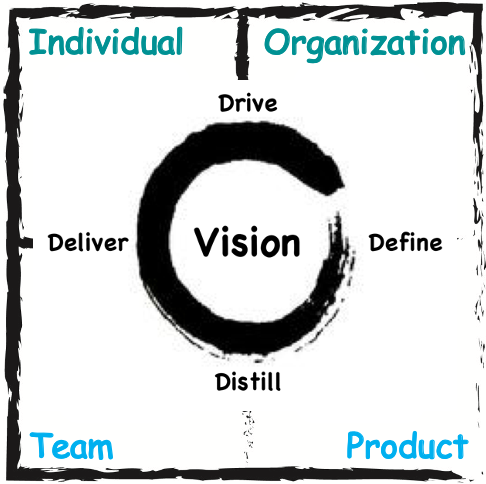Resilience. Everyone is talking about it (as well as living through it). In Finnish they use the concept of “Suomalainen Sisu” (translated to English this means to never, ever give up + to persevere + having guts, courage, and resilience).
This is the seventh in a series of posts on Implementing Flow and today we’re looking at the power of perseverance:
You use Culture (and all the elements we include in that) to shape your organization.
Copyright © 1972 – 2022 Kallman AB all rights reserved
Culture
This is Tile 7, Culture (see end of the post for a picture with all eighteen mindset tiles that we use in Flow):

There is a teach-back on Culture with Glen Liguori, FCT. Many of us will experience flashes of foresight during our careers and I shared an example of that in my post on Anticipatory Vision.
Why should we emphasize Culture?
Because the fish rots from the head, that’s why!
Your culture is more than the sum of the parts. Every person in your organization either adds to (or subtracts from) your culture. This includes your employees, consultants, stakeholders, and stockholders. Culture will make or break you. And it would be a grave error to not recognize how culture impacts and shapes our daily work.
So let’s break down the six elements included in Culture in the Flow Leadership Framework and Mindset:
1. Vision
The previous six posts are all about Vision (i.e., what you want “to be” in the future). Including this one, we’re covering Vision in three more posts.
Your Culture always begins with Vision.
And where there is no Vision, the people cast off restraint (and/or die). For example, most people are oblivious to the fact that most laws are written in the negative (eliminates any ambiguity that can create confusion).
Not only that, but all laws are also Vision statements, for example:
- Don’t murder other people (Vision: live in a safe community)
- Don’t steal other people’s things (Vision: I can build wealth without fear of confiscation)
- Don’t lie (Vision: I can trust other people and take them at their word, since if a person’s word isn’t worth anything, then neither is the person)
We now have over 50,000 pages of laws on the books because people are unable to follow Ten simple ones carved in stone.
Without a clear Vision, it will be very tough to be resilient.
2. Mission
Mission is the business that you are in. Often people use Vision and Mission as synonyms, but that is incorrect since they are not synonyms for each other. Understanding the difference between the two is fundamental to building your culture. It’s also quite potent to explicitly state what business you are not in (to help with the precision of your communication(s)).
3. Purpose
Simon Sinek has a superb book titled “Start with Why” that covers the topic of Purpose well. And as I shared in an earlier post, even Simon admits that you need to start with Vision (Click the link for the video where Simon mentions that Vision comes before Why).
- One caveat is that Simon has recently stepped back from the video I share in the link above and in more recent videos he creates confusion about the difference between Vision and Mission.
The way we define Vision and Mission in Flow eliminates confusion and I don’t agree with Simon that these are confusing (or non-standard) terms. What’s humorous about the video (that creates the confusion from his earlier statements/position) is that he proceeds to lay out a clear definition for Vision (that can’t be used for Mission, so he negates his own assertion that you can’t have a standardized definitions – especially since his definition with the three items aligns with what’s in the dictionary definitions – see below).
What I really like about what Simon teaches is that passion arises from Vision and that a Vision can be defined as a “just cause.” In any case, whatever it is that you do work with, you need to make sure that both your Vision and Mission serves a higher purpose and calling.
Without a clear purpose, it is doubtful you will be able to persevere. Purpose fuels perseverance – and that is powerful.
4. Core Values and Attitudes
Distilling agreement on your core values and attitudes is key to mitigating much of the friction that you will experience in your organization:

What happens most often is that people don’t walk-the-talk, they only talk-the-talk. And talk is cheap. And I have many examples of this in many previous posts.
5. Strategy
Your strategy(s) are your game plan for getting there (delivering on your Vision, Mission and Purpose). The most powerful example of this is in a formula that we use in Flow:

There is always the risk that a formula as powerful as this can be misused, and groupthink ensues. The one antidote to groupthink is Distillation (from the 4D Model). Using these two in parallel will help mitigate this risk:

Failure to properly Distill (agreement) is one of the primary causes of friction, politics, and the resulting failure to Deliver value. While Strategies are an essential element to Delivering the Product, Service, and/or Result to your customers, they can quickly become irrelevant if clarity is lacking.
If your Strategy(s) is not robust, resilience will quickly evaporate.
6. Goals and Objectives
In-between your Vision and Mission and your Goals and Objectives are some challenges that we’ve listed above (Purpose, Core Values and Attitudes, and Strategy(s)) that can block or impede Delivering your Goals and Objectives.
Many companies are learning how to use OKRs (Objectives and Key Results). It takes a great deal of time, training, and investment in your leadership to get these to work well. And if OKRs are accidentally “weaponized,” then you risk creating a very toxic work culture for your teams. Rigidity will set in, innovation will die out, and any hope of having the ability to pivot quickly will fade on the horizon like a mirage.
So, tread carefully when working with OKRs in your organization. It takes practice, perseverance, and resilience for these to add their intended value.
Culture Definitions
Here are some of the dictionary and university-level Definitions for “culture” to name a few:
What’s interesting is that many of the ideas included in my Definition of Culture in the Flow Leadership Framework appear in these sources above (as well as many others). My Definition of Culture has been honed and Distilled during the past 27 years and it is an accurate, powerful, and useful mindset for helping to build and shape your organization’s culture of resiliency.
The 18 Tiles
Culture is the seventh of eighteen areas on which we focus in the Flow Leadership Framework and Mindset. In subsequent posts I will be walking you through how to implement the remaining tiles to deliver outstanding and remarkable results, every day.

Seven down, eleven to go!
Focus Led Organizations Win!
Flow is methodology agnostic and will deliver consistent, remarkable results regardless of what’s being used at the individual, team, and product levels in an organization. That’s been proven over-and-over again during the past 27 years on assignments in Europe, North America, and Asia.
So, why is it that you aren’t using Flow yet?
__________
For those that are not familiar with the Flow Leadership Framework & Mindset, it is what’s next for businesses and organizations that are ready to succeed regardless of the methods, frameworks, mindsets, or management tools that they use throughout their enterprise. Flow is methodology agnostic.
Are you ‘in the zone’ of optimal performance right now as a person, team, or enterprise? Did you get there by accident or by focused intentional acts?
“Flow” gives you the way of working and mindset needed to create and maintain an optimal state of high performance as an individual, team, or organization.
The Flow Leadership Framework turbocharges everything you do, including “business agile” leadership and Scaled Agile.
__________
PS Here are the associated links to this blog post for:
#culture #scrum #agile #pmi #pmp #kanban #lean #flow #scaledagile #transformation #change #transform #leadership #digitaltrasformation #changemanagement #safeagilist #flowleadership #futureofwork #innovation